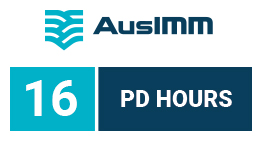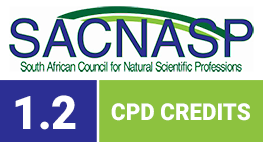Recoverable Resource Estimation by nonlinear geostatistics – Module 1: Uniform Conditioning | Training course
Develop advanced skills in geostatistics and master nonlinear techniques for recoverable resource estimation and risk analysis.
Objectives
This course provides a solid foundation in geostatistical methods for recoverable resource estimation. The skills you will develop will assist you in:
– Estimating long-term resources,
– Estimating grade-tonnage curves during exploration.
It comprises three modules that can be taken separately:
- Module 1 dives into the importance of nonlinear techniques in generating unbiased grade-tonnage curves, especially in sparse sampling conditions. You will gain a deep understanding of Uniform Conditioning (UC) and confidently apply it to compute grade, tonnage, and metal quantities across various cut-offs.
- Module 2 explores Multiple Indicator Kriging and Conditional Expectation, helping you master when and how to apply each technique effectively.
- Module 3 introduces two powerful conditional simulation techniques for continuous variables like grades. You’ll also learn how to post-process results to generate accurate grade-tonnage curves.
Course content
- Introduction
– Why kriging isn’t enough: Understand the limitations of kriging and how wide high drill hole spacing can lead to smoothing effects that underestimate variability.
– Master the fundamentals of recoverable resource estimation and learn how to apply them in real-world mining projects. - Transforming data
– Model the Gaussian anamorphosis: Transform any distributions into Gaussian ones, a necessary step for nonlinear modeling.
– Change of support made clear: Grasp the impact of support size on grade variance—core vs. block grades. - Exploring Uniform Conditioning (UC)
– Learn the fundamentals of UC to estimate recoverable resources for different cut-offs.
– Understand the Information effect, how sampling density impacts your estimates, and how to correct them.
– Localized Uniform Conditioning (LUC): Apply UC within panels at the block or SMU level to produce models compatible with mine planning.
– Manage multi-domain and multivariate deposits.
– Produce robust grade-tonnage curves and generate robust estimates of grade, tonnage, and metal quantities by cut-off grade from UC results to support your resource evaluations.
Outlines
- Balanced learning approach: The course combines theory with practical applications, ensuring concepts are understood and applied effectively.
- Hands-on software training: Engage in computer-based exercises using Isatis.neo software, reinforcing learning through real-world data scenarios.
- Personalized feedback: Receive individualized guidance and feedback from experienced trainers during online sessions to support your learning journey.
- Comprehensive resources: Access detailed course materials, including documentation, journal files, and datasets, to reinforce learning and facilitate application post-training.
Who should attend
Geologists, Mining engineers, and professionals involved in feasibility studies or medium to long-term planning who wish to deepen their theoretical and practical knowledge of mining geostatistics.
Prerequisites
- Basic knowledge of linear geostatistics is recommended. The course Mineral Resource Estimation, covering the fundamental concepts of geostatistics for resource estimation, offers an ideal basis for this advanced course.
- A basic understanding of resource concepts such as grade, tonnage, and cut-off is beneficial.
- You can enhance your skills by attending the two additional modules of this course: Module 2 focuses on Multiple Indicator Kriging, while Module 3 covers Simulations of continuous variables, to calculate metal and tonnage quantities in both modules.



